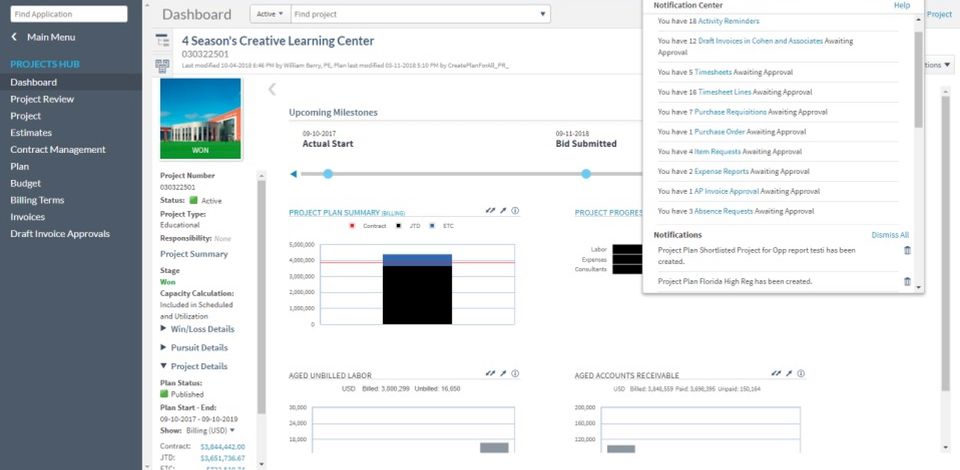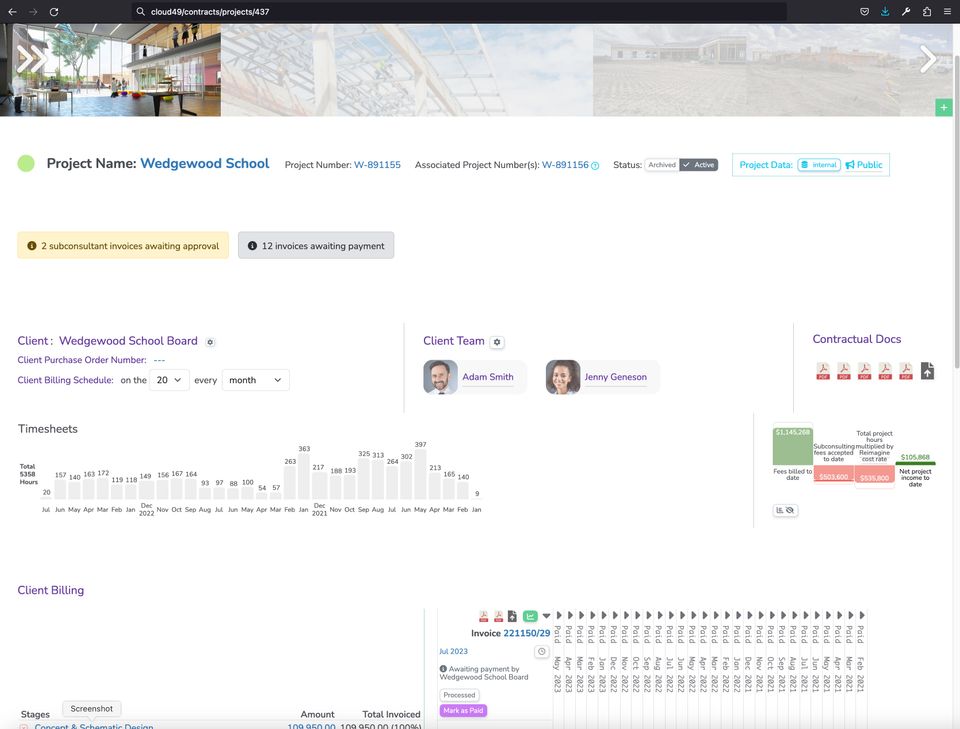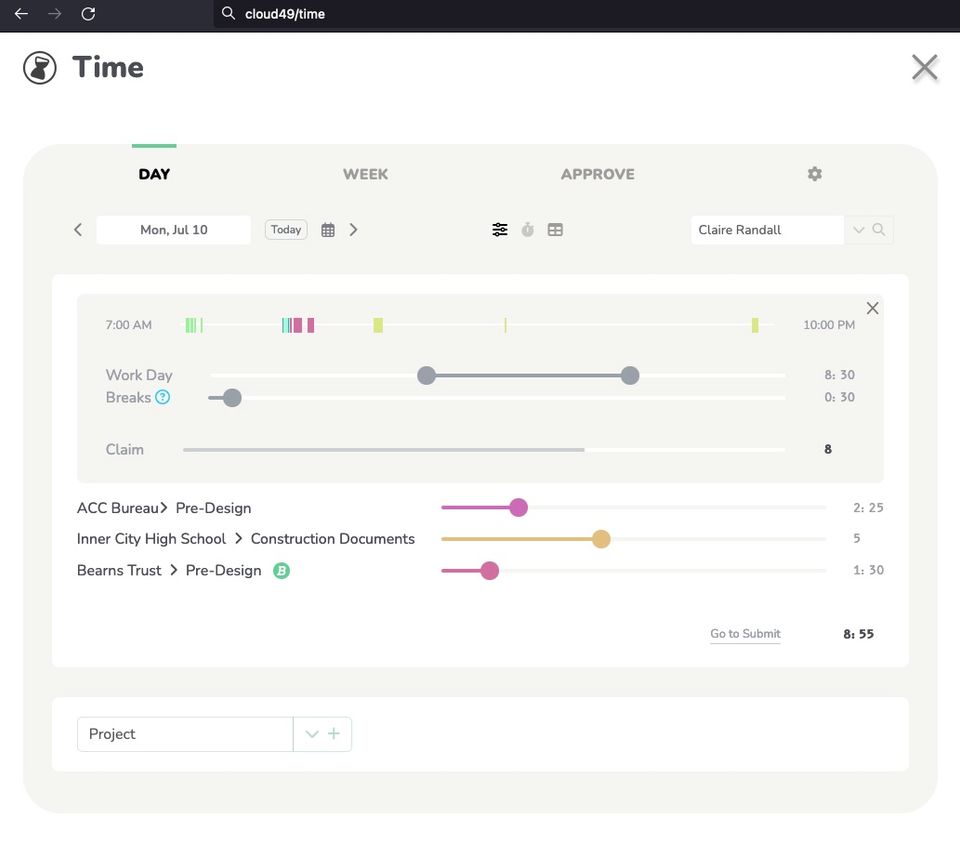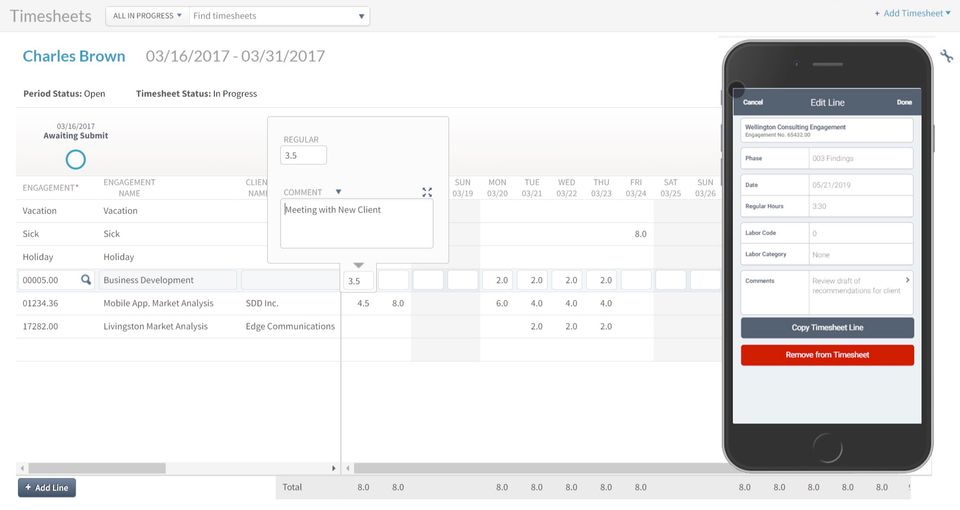ERP in Architecture

Architectural firms have had few alternatives to traditional ERP (Enterprise Resource Planning) software when hitting the growth ceiling at around 30 employees.
This post examines the benefits and downsides of conventional ERP solutions re-purposed for the AEC industry and how Cloud 49 differs.
Function of ERP
ERP helps manage day-to-day business activities such as accounting, project management, risk management, and supply chain operations. ERP helps plan, budget, predict, and report financial results.

Users are typically accountants and project managers, but many ERP systems bundle a CRM and timesheets, adding the marketing team, potentially all staff, to the daily users.
Cloud 49 possesses components of traditional ERP but differs fundamentally in philosophy, intent, and approach. Cloud49 taps synergies between team roles, including in the extended team (clients and sub-consultants). The modules of Cloud49 are about collaboration, productivity, and having your back.

The key difference between ERP and Cloud49 is that ERP was initially developed for large corporations in the 1990s and extended to other industries (like the AEC industry), whereas Cloud 49 is a ground-up solution to the problems architects face.
Everything but the kitchen sink
Adopting an ERP solution is a considerable undertaking with far-reaching consequences, including significant lock-in.
ERPs bundle several components that have weak connections to each other. For example, when modern, innovative solutions abound in the market, why do ERPs include very dated
- CRMs,
- time-entry,
- and project planning?
By contrast, Cloud49's modules have solid designs and clear advantages over standalone offerings.
Culture and Fit
ERP solutions for the AEC industry (Architecture, Engineering, and Construction) don't recognize that architecture is unique:
- Architectural projects involve managing multiple third-party contracts (sub-consultants and clients). For this reason, Cloud49 includes a comprehensive contract management system designed for and by architects.
- Design Change Management is a critical aspect of delivering architectural projects successfully, and Cloud49 has this covered.
- Ditto, Cloud49 provides an awards and media recognition system - another nod to its focus on architects.
Because ERP primarily serves senior management and still echoes its corporate roots dating back to the 1990s, it creates data hierarchies and information siloes. ERP is not suitable for firms that want to retain their small company feel as they expand.
In recognition that architects are creatives, Cloud49 provides beautiful tools that elevate its users.
A Data Repository
A notable claim of ERP is that it's a single source of truth for organizational data. But that benefit is overstated and must go much further to compensate for vendor lock-in.
Cloud 49 goes further by enhancing and sharing your data across your entire team and presenting it in a relevant way for architects.
Eliminating duplicated data is intentional in Cloud49; it shares data with other systems via its modern API. For example, your public website could show your up-to-date portfolio and team without manual intervention.
User Interface (UI)
Like architects, we're passionate about design. Our mission is "to create works of beauty and simplicity that belie their power." Architects helped build Cloud49 and continue to have a voice.
As a software firm, we love to work at the forefront, and being small, agile, and niche focused has allowed us to push the envelope.
For example, to create a superior time-entry experience for Cloud49, we conducted extensive research and designed three unique UIs to suit individual preferences. Whereas most time-entry systems provide a tabular interface and integrate with Quickbooks Online accounting software (because that's easier), we tackled QB Desktop first because that's what most customers use.
Which of the following timesheet systems would you prefer to use every day?

Most ERP software is very dated, and little thought went into the user experience (UX):

Adoption
Successful ERP implementation typically requires a change management program and certified training.
Because ERPs are so complex and have an unnecessarily broad scope, expect significant upheaval trying to uproot them later.
Cloud 49's intuitive platform does not require training, and your team will more easily understand the value it provides and how.
Customer Service
Reviews of leading ERP customers suggest that getting a resolution takes a long time. When you have an issue, you submit a 'ticket' and get an automated response.
Support in Cloud49 is fully in-app and multi-channel, with live chat during business hours. We rarely take more than 24 hours to resolve urgent issues, and you will never receive a 'standard' answer.
Cost & Contract
The leading ERPs are shockingly expensive, with two-year contracts as the norm, whereas Cloud49 has minimal contractual commitment and reasonable prices.
Commitment
ERP is a cash cow for prominent vendors with dated products.
Last year, Cloud49 had over 300 software releases bringing new features, better performance, and improved design.

Being a startup dedicated to our customers, we're committed to continuously improving your operational efficiency and delivering exceptional service. Its a big deal for us to have you as a customer.
Conclusion
Architects using ERP could improve productivity and staff satisfaction by using best-in-class standalone solutions for their CRM, project planning, and timesheets.
When in the market for ERP, consider Cloud 49 as a modern solution to operational and scaling challenges - a solution that prioritizes staff retention and quality of life.
